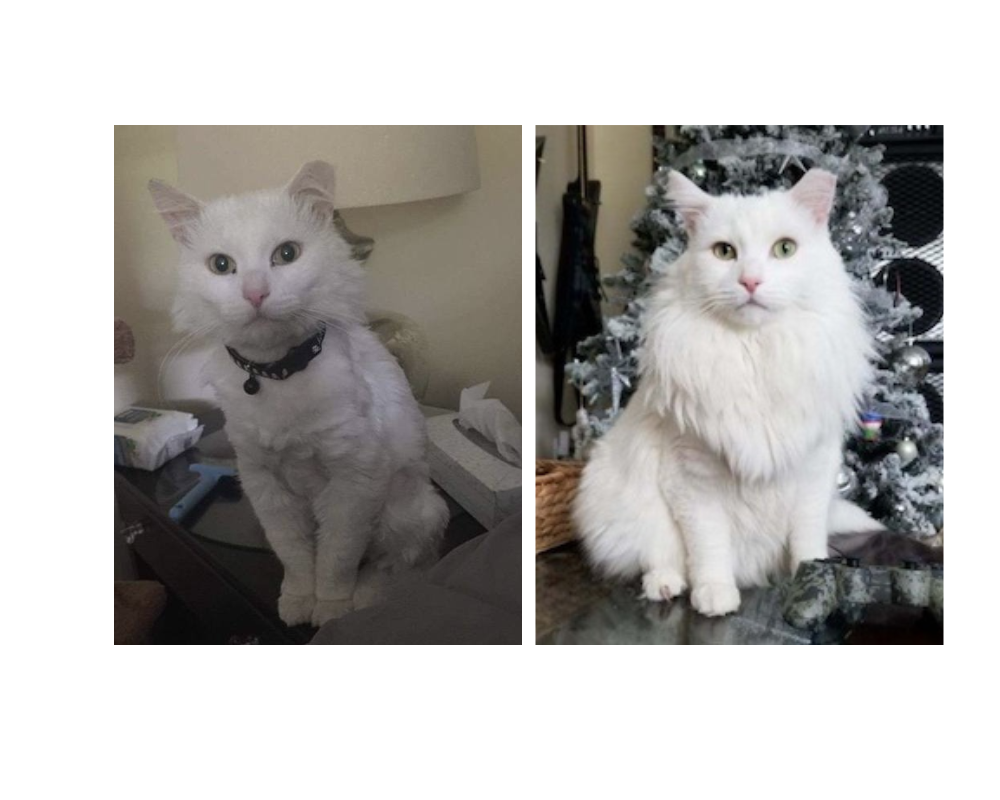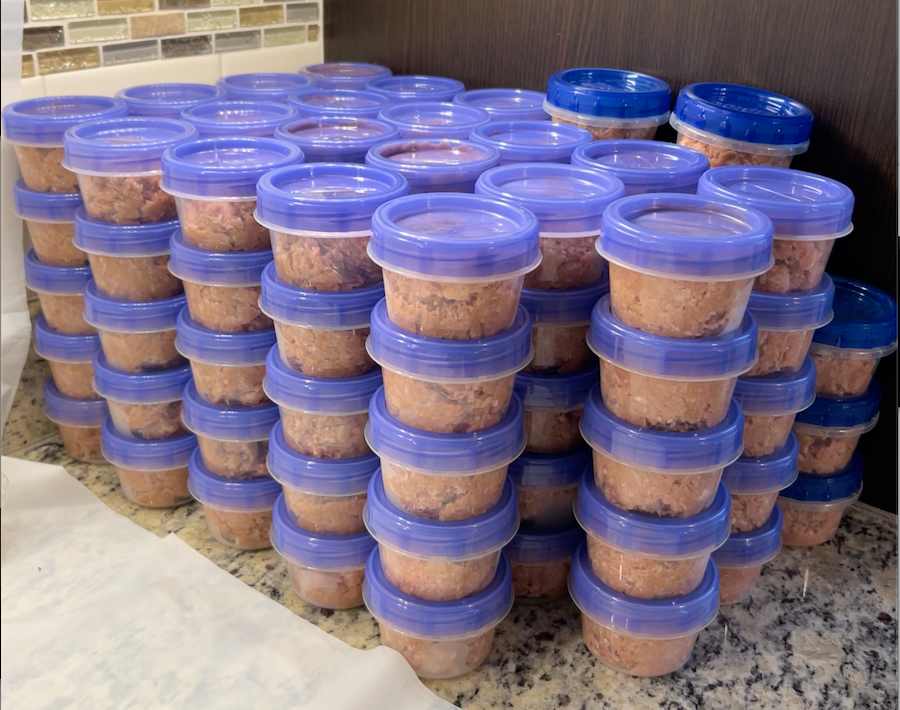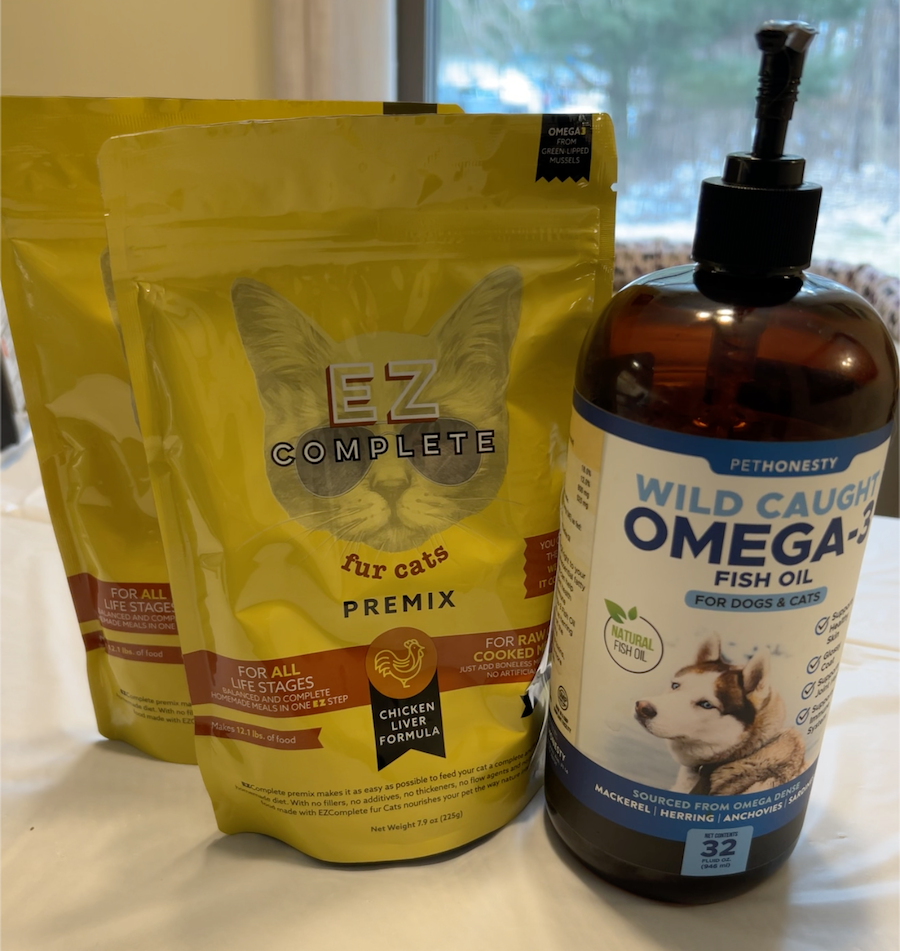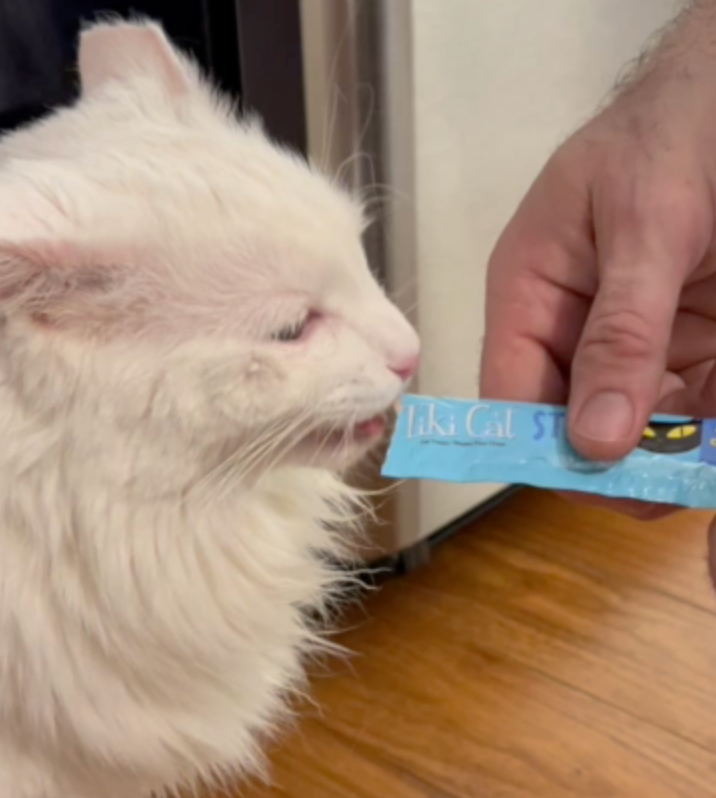Feline Leukemia Virus (FeLV) Treatment
Learn How Zakk Beat
Feline Leukemia Virus (FeLV)
by Eating a Raw Foods Diet with Supplements
What is Feline Leukemia Virus (FeLV)?
Feline leukemia virus (FeLV) is a retrovirus that is contagious among cats. It is spread primarily through bodily fluids, especially saliva, when infected cats come into close contact with uninfected ones.
Once contracted, FeLV suppresses the infected cat’s immune system by interfering with the function of its white blood cells. This makes the cat more prone to severe illnesses and cancers that its body can no longer fight off effectively. Feline leukemia virus (FeLV) is responsible for many serious diseases in cats and leads to premature death in a high percentage of infected felines.
Key Factors about FeLV
- Feline leukemia virus (FeLV) is a retrovirus that infects and replicates in cats. It suppresses the immune system and predisposes cats to other infections and diseases.
- It is transmitted primarily through direct contact between infected and non-infected cats, usually through saliva. Cat bites are a major mode of transmission.
- Common symptoms include lethargy, loss of appetite, fever, weight loss, enlarged lymph nodes, infections, and anemia. However, many infected cats show no symptoms initially.
- There is no cure, but a vaccine is available to protect uninfected cats. Infected cats should be separated from uninfected ones.
- Life expectancy for cats after diagnosis varies depending on health, but many succumb to FeLV-related diseases within 2-3 years. However, a subset of infected cats can live normal lifespans.
- Diagnosis is done through a simple blood test. Kittens should be tested before vaccination, and retested after to confirm they have not been exposed.
- Feline leukemia virus(FeLV) occurs worldwide but is more prevalent in dense, multi-cat populations. Stray and feral cats are at highest risk. Indoor-only housecats are unlikely to be exposed.
- Prevention includes testing new cats, separating infected ones, vaccinating uninfected cats, and minimizing exposure to unknown cats/environments.
Meet Zakk
Zakk’s Story
We went to a shelter to adopt a dog, but there were no dogs available. We decided to look at the cats, but none of them seemed very interested in me until I was leaving. There was a closed room with a glass door. Inside was a white cat all by himself, facing away from the door.
He peaked my curiosity. Why was he in there all alone?
They said he was 3 years old, and he tested positive for the feline leukemia virus (FeLV). I was told he would probably only live another year or so. I asked to meet him. The shelter employee said I could meet him, but then I would need to leave the building immediately after exiting the room.
That was the last day Zakk would spend in a room in isolation. We adopted him and took him home that day.
He was a very sweet cat, and he immediately showed me affection.
We could see the toll feline leukemia virus (FeLV) had taken on him. He was unhealthy, had little fur, and had about 10 coughing fits a day, as well as being unable to meow.
They said he would have a hard time getting his fur back, and the meow most likely would never come back based on his health.
Zakk Before Picture
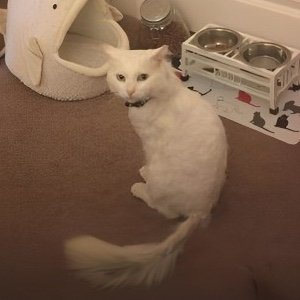
Zakk’s Diet
I began doing research online and found information about what a healthy cat diet is supposed to be—and it was not your typical store-bought cat food. I learned about species-specific diets and how mimicking what a cat would eat in the wild is a healthy option.
I decided I would make his cat food, which is mostly a raw diet, and occasionally he got healthy treats. Feeding Zakk a healthy diet ending up being a life changing experience for him.
Vet Results
When I adopted Zakk, the veterinarians gave him a grim prognosis. They didn’t expect him to live very long given his poor health condition. Even a close relative of mine, who is a veterinarian, agreed with their assessment.
After following a consistent healthy diet, tests for feline leukemia virus (FeLV) were run again. I actually brought Zakk to 2 different veterinarians for these tests. Both vets showed Zakk was negative for feline leukemia virus (FeLV).
Years later, Zakk is thriving and a very healthy and happy cat. The vets are astonished at his remarkable recovery. I continue to feed him the same diet.
This picture was taken about a year after we adopted Zakk. The difference with this guy has been amazing.
He meows all the time, his fur is incredible, and no more coughing fits at all.
I still can’t believe nobody wanted this cat! Every day for almost 2 months, he got passed on by tons of people at a huge shelter that sent out 30 cats a day! I’ve never loved a cat in my life, but that has changed!
Zakk After Picture
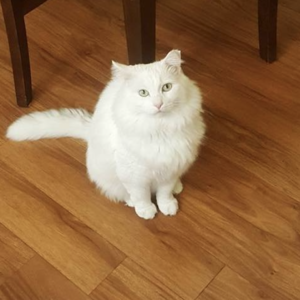
Zakk Side by Side Comparison
